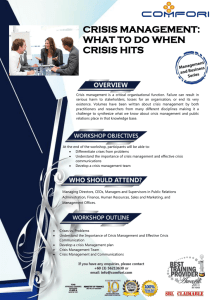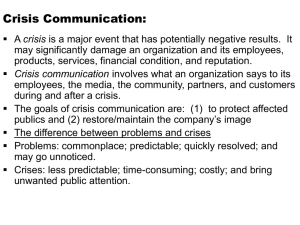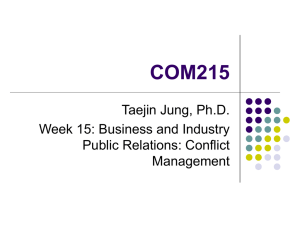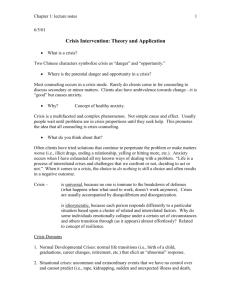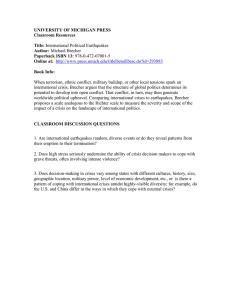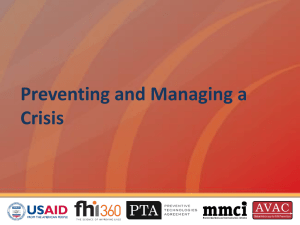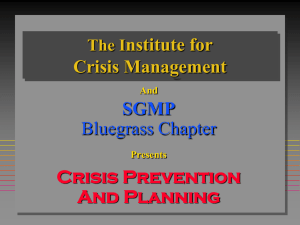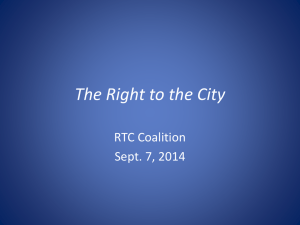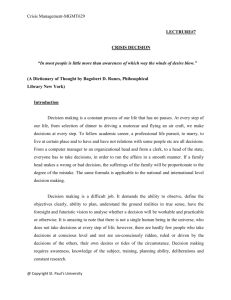Lecture 22
advertisement
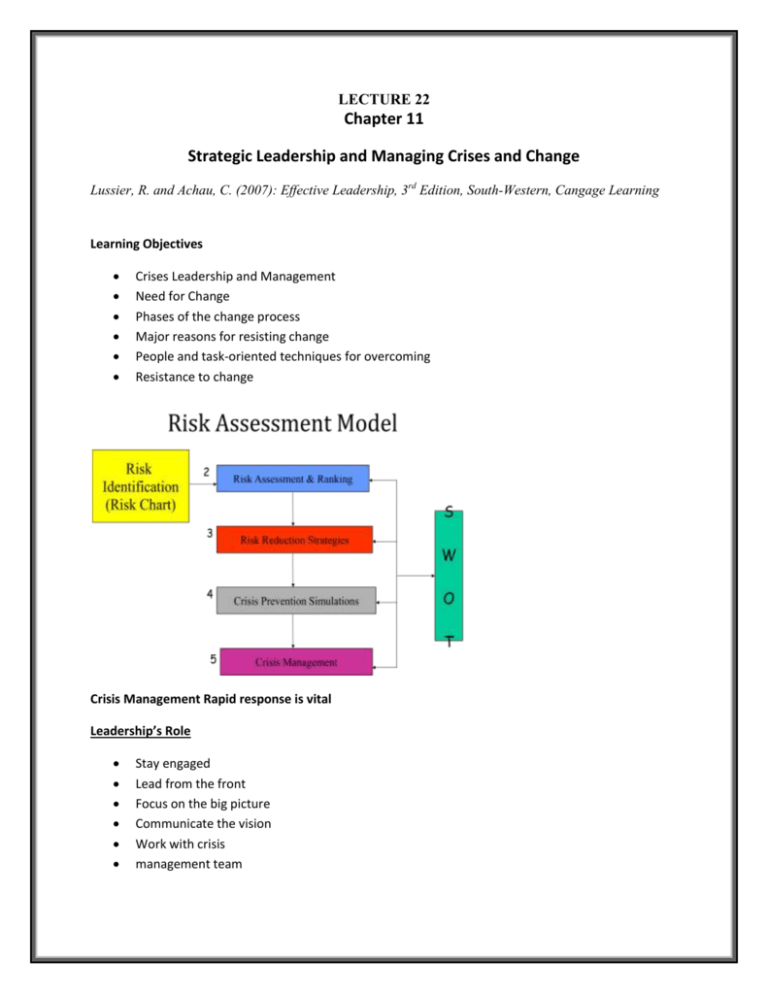
LECTURE 22 Chapter 11 Strategic Leadership and Managing Crises and Change Lussier, R. and Achau, C. (2007): Effective Leadership, 3rd Edition, South-Western, Cangage Learning Learning Objectives Crises Leadership and Management Need for Change Phases of the change process Major reasons for resisting change People and task-oriented techniques for overcoming Resistance to change Crisis Management Rapid response is vital Leadership’s Role Stay engaged Lead from the front Focus on the big picture Communicate the vision Work with crisis management team Effective Crisis Communication Can make or break company reputation Designate Spokesperson in event of crises Failure can extend crisis Effective Crisis Communications First 24 hours crucial Media’s need to know Tell company’s story Press releases Press kits Guidelines for Effective Crisis Communication & Management 1) Be honest 2) Don't spin 3) Communicate plan of actions 4) Be sensitive with affected parties 5) Avoid conflicting messages 6) Admit the situation and specify actions to manage crises or plans to avoid such incidence in future counter its damage and what are 7) Don't make excuse for leaders 8) keep informed and updated employees during crises 9) Media is your link to public be honest and straightforward to them 10)Tell what your are doing to fix crisis 11) Acknowledge fear and grief of employees 12) Post crises evaluation Leading Change Organizational Change Activities associated with planning, designing, implementing, and internalizing tools, procedures, routines, processes, or systems that will require people to perform their jobs differently Organizations spend millions on change efforts Organizational change is any transition that requires change in human behavior and performance Process improvement, Restructuring, Downsizing, Expansion, Merger, adaptation of new technology etc. Need for Change Environment changing rapidly – New technology – Global economy – Changing market requirements – Intense domestic and international competition New opportunities and threats for leadership 1) Survival Anxiety 2) Learning Anxiety Response to Pace of Change • Flatter, more agile organizational structures • More empowering, team-oriented cultures • Leaders must lead the responses and act as transformational leader LEADING CHANGE Not every leader can successfully implement change Role of the leader is to facilitate change that results in better performance Change-oriented leaders are responding by initiating strategies that match the requirements of the turbulent environments in which organizations exist The change process mean to transform organization Stages In The Change Process The Force Field Model THE EIGHT STAGE MODEL OF THE CHANGE PROCESS Unfreezing 1 Establish a sense of urgency Change 2 Form a powerful guiding coalition 3 Develop a compelling vision 4 Communicate the vision widely 5 Empower employees to act on the vision 6 Generate short-term wins 7 Consolidate gains, create greater change Refreezing 8 Institutionalize or stabilize changes in the organizational culture Why Do People Resist Change? Challenge status quo and lead to stress, discomfort, and uncertainty Threat to self interest Uncertainty & loss of comfort zone Lack of faith in the change That it is necessary That it will succeed • Distrust of leadership • Learning Anxiety • Threat to values • Personal • Organizational • Fear • Of the unknown Of being manipulated How Can a Leader Reduce Resistance to People-Oriented Change? • Show relentless support & unquestionable commitment to the change process • Communicate an urgent about the need for the change • Continually communicate regarding the progress of the change • Avoid micromanaging • Empower people to implement the change • Help people deal with the trauma of the change • Ensure change efforts are funded • Prepare people for necessary adjustment • Career counseling • Retraining How Can a Leader Reduce Resistance to Task-Oriented Change? • Assemble a coalition of supporters • Align organizational structure with new strategy for consistency • Survey the organizational landscape for likely supporters and opponents • Reward contribution for change efforts • Recruit and fill key positions with competent and committed supporters • Know when and how to use ad-hoc committees or task forces to shape implementation activities • Know when a full-scale approach to implementation is needed Source: Lussier, R. and Achau, C. (2007): Effective Leadership, 3rd Edition, South-Western, Cangage Learning
